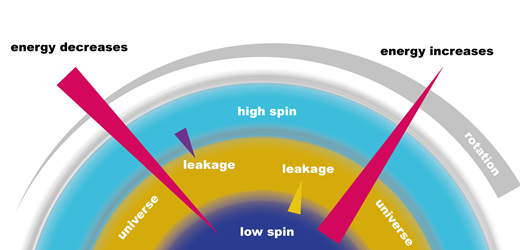What is gravity and where does it come from?
Another mystery in physics that both Isaac Newton and Einstein had a go at explaining was the workings of gravity. However, neither really succeeded in defining what it is and where it comes from. Both worked from the point of view of relating gravity to mass, but then where does mass come from? It's all well and good creating a circular self-sustaining argument, but without explaining where the circle starts leaves a giant void in the library of knowledge. But, I'll have a go, while approaching the subject from the perspective of following patterns.
We know a lot about how gravity manifests itself in the real world but little about what causes it. The theories derived by all major physicists and astrophysicists has stuck doggedly to the concept that gravity has shaped and continues to shape the universe, but nobody that I have come across can explain, to my satisfaction, the most important factor, namely what it is. But, first here is the official textbook explanation.
............
[What is gravity?
Gravity is a force pulling together all matter (which is anything you can physically touch). The more matter, the more gravity, so things that have a lot of matter such as planets and moons and stars pull more strongly.
Mass is how we measure the amount of matter in something. The more massive something is, the more of a gravitational pull it exerts. As we walk on the surface of the Earth, it pulls on us, and we pull back. But since the Earth is so much more massive than we are, the pull from us is not strong enough to move the Earth, while the pull from the Earth can make us fall flat on our faces.
In addition to depending on the amount of mass, gravity also depends on how far you are from something. This is why we are stuck to the surface of the Earth instead of being pulled off into the Sun, which has many more times the gravity of the Earth.]
..........
If that sounds like a bit of a vacuous self-sustaining and circular explanation to you, then you are not alone. Essentially what is being stated is that gravity depends on mass, and mass depends on gravity, but then, what creates mass? Well, that depends on gravity! Which came first to start this cycle is never explained, but as you will have guessed that is not a barrier if you explain it from the viewpoint of the pattern.

The idea for what gravity really is, came to me as a combination of looking at atomic spin-states, combined with watching a video clip of Professor Eric Laithwaite demonstrating a gyroscope (watch video clip). Better still, it fits perfectly with the pattern method of viewing nature.

If we stick with using the bubble-state universe model, then in the lower state universe the atomic spin-rate would be less (less energy) than in our universe, and in the higher state universe the atomic spin-rate be higher than in our universe. This would create an imbalance which would cause our universe to try and 'balance' itself, in the same way that a battery will try to balance itself across its terminals. This results in lower spin atoms seeking to move upwards with higher spin-state atoms moving downwards. Both movements, though, need to negotiate the rotational spin of the whole amassed universes, which results in the energy content of our universe consisting of a mix of low energy and high energy spin energy elements.
The atoms from the two differing energy
states need to try and negotiate a balance point, but where they do it creates a local imbalance, that causes these atoms to interact and create new forms. These forms eventually become matter, which, in further seeking to balance itself, clumps together to create the base elements which over time coalesced into the physical elements of the universe - plasma clouds, nebulae, stars, planets and moons etc. These are, literally, spin-offs from the interaction between low energy and high energy leaking between the high state and low state universes and into ours'.
Gravity comes first.
Gravity would be a function of the imbalance between the high-spin and low-spin universes and imparts direction (an up-state and a down-state) to particles that have now come together and assumed mass. This direction takes the form of an attraction down to the lower spin-state, counterbalanced by an upward pull of the high spin-state. What we experience as gravity is a balance point between these two differing levels of force.
The clue that comes from Eric Laithewaite's gyroscope demonstration is almost Einsteinian in its aspect. At rest the atoms in the gyroscope’s wheel are at balance with the local spin-state of the surrounding universe. As soon as a mechanical spin is applied to the gyroscope wheel its high rotational speed and circular, therefore, spiral motion fools its local atoms into believing they are moving at a higher spin rate. In fact, artificially, they have been accelerated to move faster. As result the atoms attempt to balance themselves in real space-time, which influences the gyroscope to move upwards and away from its neutral starting spin-state to where it thinks it ought to be in space-time. It is seeking to 'balance' itself in the universe. The mass of the gyroscope remains constant, because mass is fixed by the local space time, but the energy wants to move up to match the higher spin rate.
The key, I believe, that enables the balancing process to happen is nothing more or less than the humble electron, that has an inherent ability to move from atom to atom (perhaps even universe to universe) and does so most efficiently through conductors - like metals. When you pass electrons though a suitable conductor the result is what we locally call ELECTRICITY.
We live in an electric universe!
|




